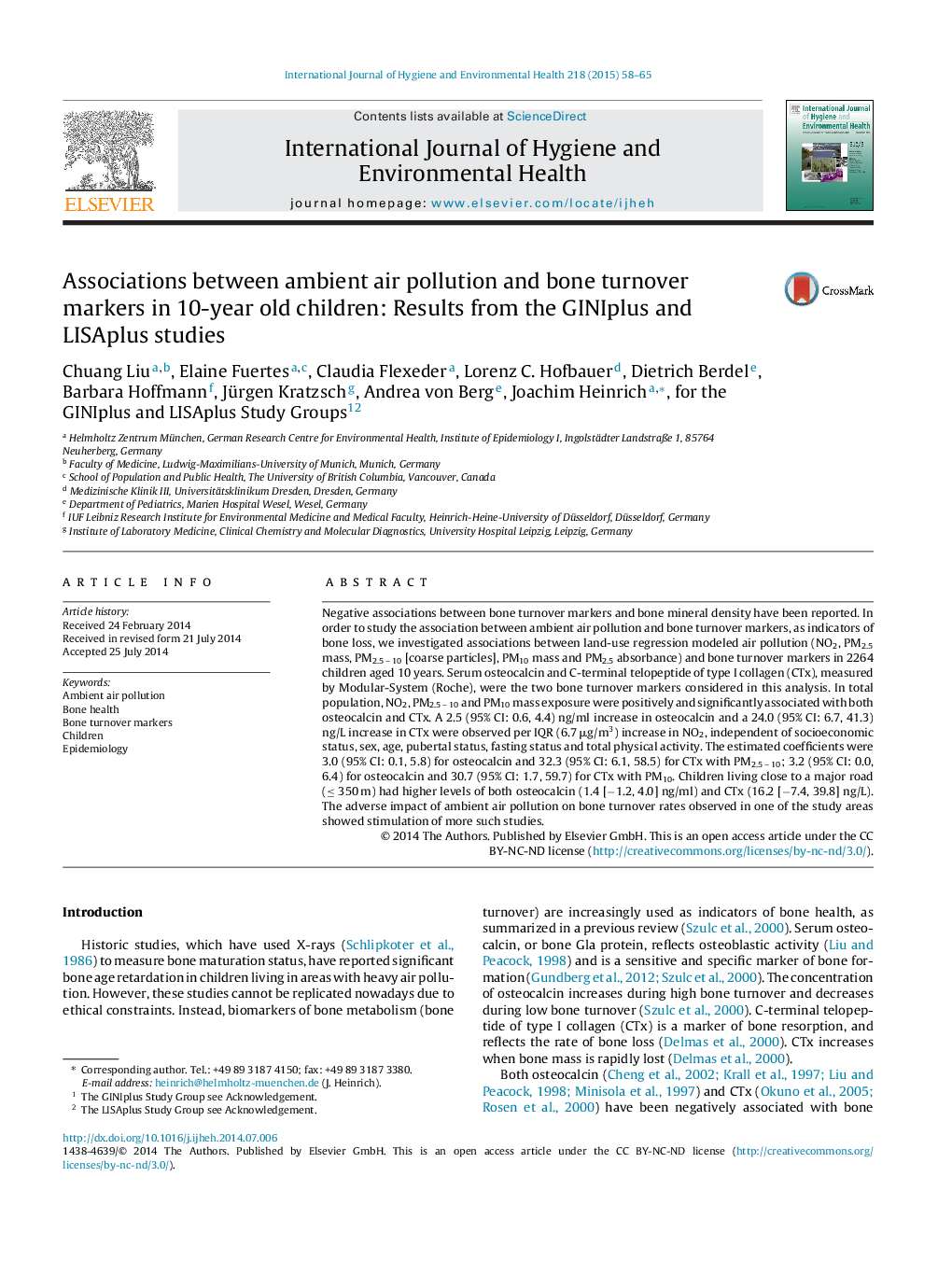| Article ID | Journal | Published Year | Pages | File Type |
|---|---|---|---|---|
| 5854611 | International Journal of Hygiene and Environmental Health | 2015 | 8 Pages |
Abstract
Negative associations between bone turnover markers and bone mineral density have been reported. In order to study the association between ambient air pollution and bone turnover markers, as indicators of bone loss, we investigated associations between land-use regression modeled air pollution (NO2, PM2.5 mass, PM2.5 - 10 [coarse particles], PM10 mass and PM2.5 absorbance) and bone turnover markers in 2264 children aged 10 years. Serum osteocalcin and C-terminal telopeptide of type I collagen (CTx), measured by Modular-System (Roche), were the two bone turnover markers considered in this analysis. In total population, NO2, PM2.5 - 10 and PM10 mass exposure were positively and significantly associated with both osteocalcin and CTx. A 2.5 (95% CI: 0.6, 4.4) ng/ml increase in osteocalcin and a 24.0 (95% CI: 6.7, 41.3) ng/L increase in CTx were observed per IQR (6.7 μg/m3) increase in NO2, independent of socioeconomic status, sex, age, pubertal status, fasting status and total physical activity. The estimated coefficients were 3.0 (95% CI: 0.1, 5.8) for osteocalcin and 32.3 (95% CI: 6.1, 58.5) for CTx with PM2.5 - 10; 3.2 (95% CI: 0.0, 6.4) for osteocalcin and 30.7 (95% CI: 1.7, 59.7) for CTx with PM10. Children living close to a major road (⤠350 m) had higher levels of both osteocalcin (1.4 [â1.2, 4.0] ng/ml) and CTx (16.2 [â7.4, 39.8] ng/L). The adverse impact of ambient air pollution on bone turnover rates observed in one of the study areas showed stimulation of more such studies.
Related Topics
Life Sciences
Environmental Science
Health, Toxicology and Mutagenesis
Authors
Chuang Liu, Elaine Fuertes, Claudia Flexeder, Lorenz C. Hofbauer, Dietrich Berdel, Barbara Hoffmann, Jürgen Kratzsch, Andrea von Berg, Joachim Heinrich, for the GINIplus and LISAplus Study Groups for the GINIplus and LISAplus Study Groups,
